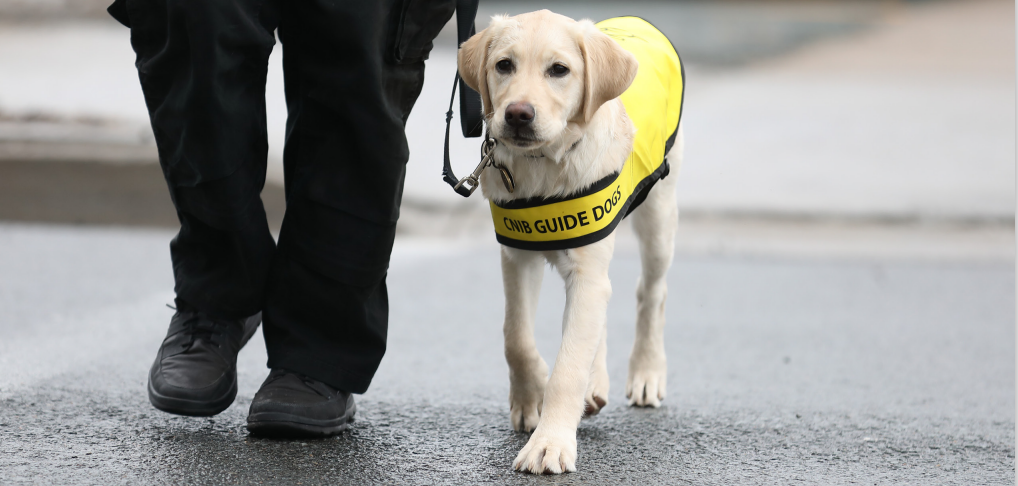The Future of Guide Dogs in Canada
CNIB Guide Dogs Expansion: Campaign Overview
The pandemic clarified and sharpened our understanding of the need for CNIB to accelerate the development of a sustainable, full-service guide dog program for Canadians who are blind or partially sighted.
We are at a critical point – representing both an opportunity and a challenge – to respond to an urgent need that has been created for guide dogs in Canada, both in the short- and long-term.
We will address this challenge with a fundraising campaign designed to significantly expand the CNIB Guide Dogs program. The overall goal for the campaign is $25 million, including three focus areas plus 10% contingency fund.
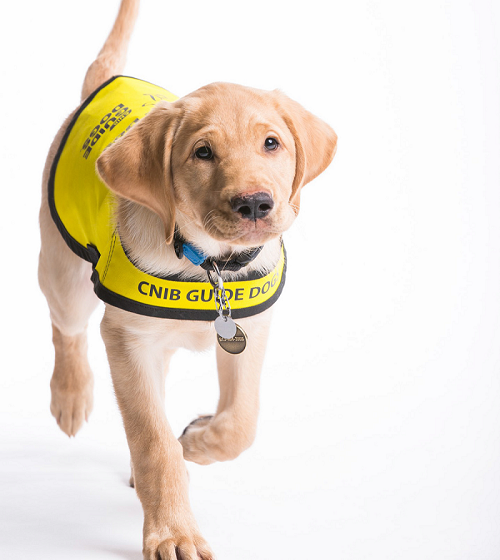
Focus Area 1: Urgent Need of 150 Guide Dogs
Focus Area 1: From March to November 2020, the demand for CNIB guide dogs has grown by more than 375%. We continue to receive 30-50 applications per month. To meet this urgent demand, our goal is to raise, train, and graduate 150 guide dogs by 2024.
Focus Area 2: Canine Campus
Focus Area 2: We aim to renovate and build additional pods, training areas, and
veterinarian resources to train and graduate 150 dogs each year to meet
the demand of guide dogs in Canada.
Focus Area 3: Puppy Development Program & Facilities
Focus Area 3: To secure the sustainability and quality of guide dogs available, we need
to breed best-in-class guide dogs right here in Canada. Our goal is to
establish a breeding program to make that goal a reality.
"My guide dog is my freedom. Without him, I am not able to live the life that I want."
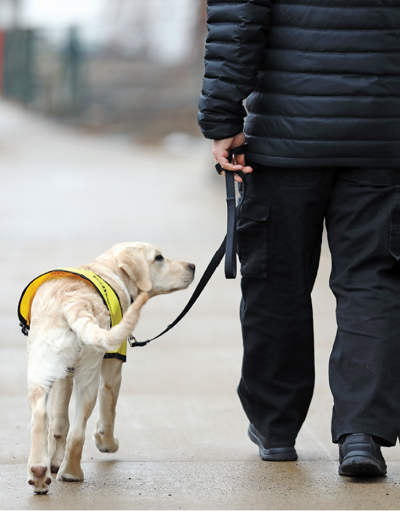
Focus Area 1: Urgent Need of 150 Guide Dogs, Fundraising Goal: $7,500,000
Since the program started in 2017, CNIB Guide Dogs has been well-received and supported by our clients. As such, the intention was always to increase capacity with expanded funding. The pandemic rapidly expedited our need to grow and created an urgency for additional funding to meet increasing demands (30-50 applications per month).
Our guide dogs require two years of intensive training and investment. It involves special techniques for raising puppies, training for all situations faced in the life of a handler, and screening for temperament and health. CNIB covers all costs from puppyhood to retirement, at no cost to the individual, at $50,000 per guide dog.
In order to expedite this process, we will be acquiring one-year-old dogs who will go into immediate intensive training and will be partnered with handlers who are blind within 12 to 18 months. We will also be acquiring new puppies and six-month-old dogs who will go into the regular program to be ready to be placed in the next round of graduates.
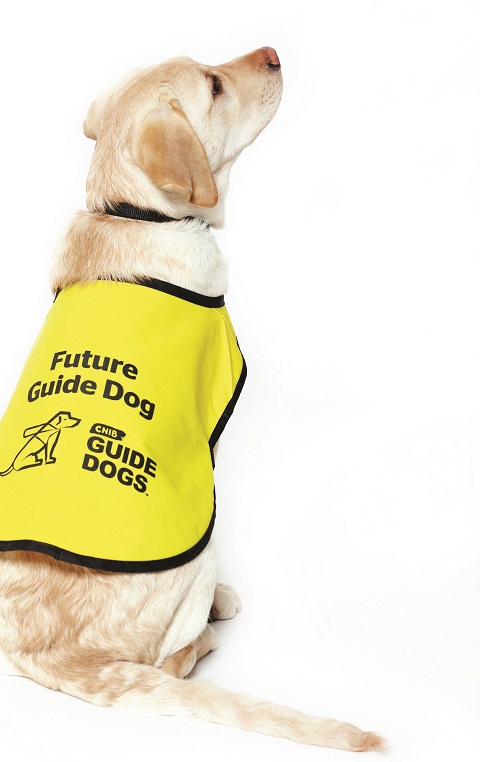
Focus Area 1: Urgent need of 150 Guide Dogs
Budget Overview
Program Costs: 68%
Operations: 28.3%
Travel & Misc: 3.7%
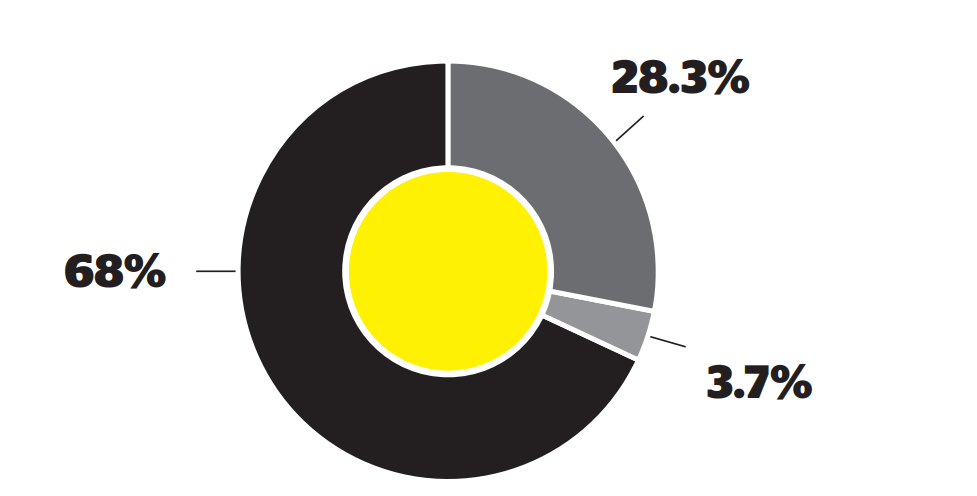
Program Costs
Puppy purchase, fundraising and program materials, veterinarian bills, food, harnesses, leashes, toys, medicine
Operations
Puppy raising supervisors; guide dog trainers, mobility instructor apprentices, and mobility instructors; dog care and welfare specialists; administration and advocacy team; senior leadership and management
Travel & Misc.
Air/ground transportation, fuel, vehicle maintenance, vehicle leases, equipment, software, amortization
"My guide dog has graduated university with me. He accompanies me on trains, planes, buses, boats, subways and taxis. It is so difficult to put into words how my guide dog has transformed my life."
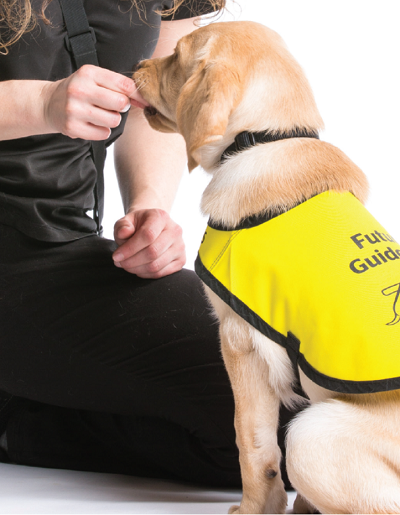
Focus Area 2: Canine Campus, Fundraising Goal: $7,500,000
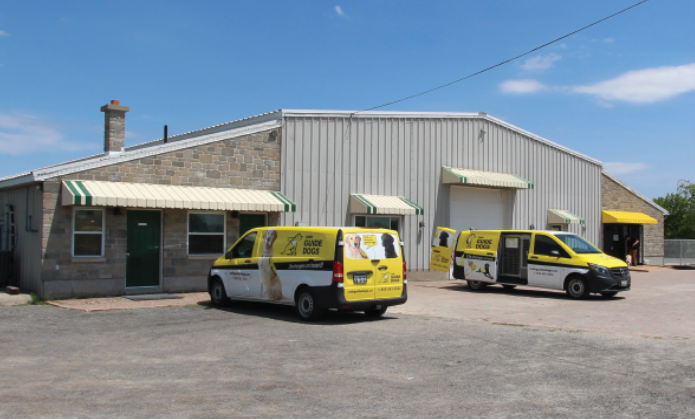
Acquired in 2018, CNIB’s Canine Campus in Carleton Place, Ontario, is a state-of-the-art guide dog training centre where our dogs learn the skills they need to become partners in mobility for individuals who are blind. It’s a world-class training arena that features accommodations for more than 40 dogs a year, and also serves as a fully accessible headquarters and workplace for trainers, volunteers, and other CNIB Guide Dogs team members.
We are tremendously proud of the life-changing work that happens in our Canine Campus, but this facility must be expanded to meet the current and future need for guide dogs across Canada.
The expansion of the CNIB Canine Campus is an essential step in establishing a robust CNIB Guide Dogs program that is able to serve all Canadians in need of a guide dog nationwide.
Focus Area 2: Canine Campus
Proposed Expansions
The development of additional kennel space with more dog pods in the underdeveloped long corridor of the Canine Campus. This space will maximize the number of dogs we train to place with handlers who need them.
A “dog pod” redesign project that will make the area bright and open, designed with the dogs’ comfort and health in mind. The redesign will include the building of plate glass on at least one side of each pod, meaning the dogs will face the busy interior of the open facility. This will allow staff to hear and see what is going on in each pod as our program grows.
The creation of an “indoor city” where dogs learn the rudiments of day-to-day safe travel with their handler. The Canine Campus is home to a vacant arena space that we aim to transform into an attractive, functional, and multi-purpose environment, including an obedience ring and an innovative “indoor city” space that simulates real world environments.
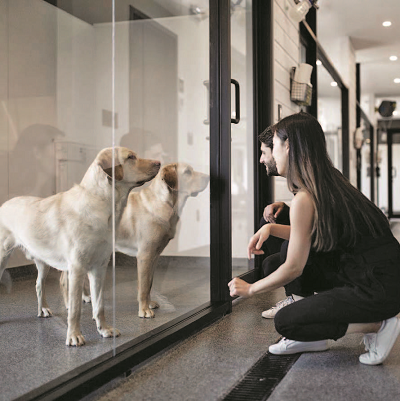
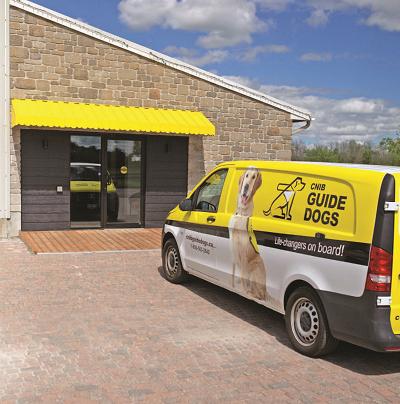
Focus Area 2: Canine Campus
Renovation Rendering
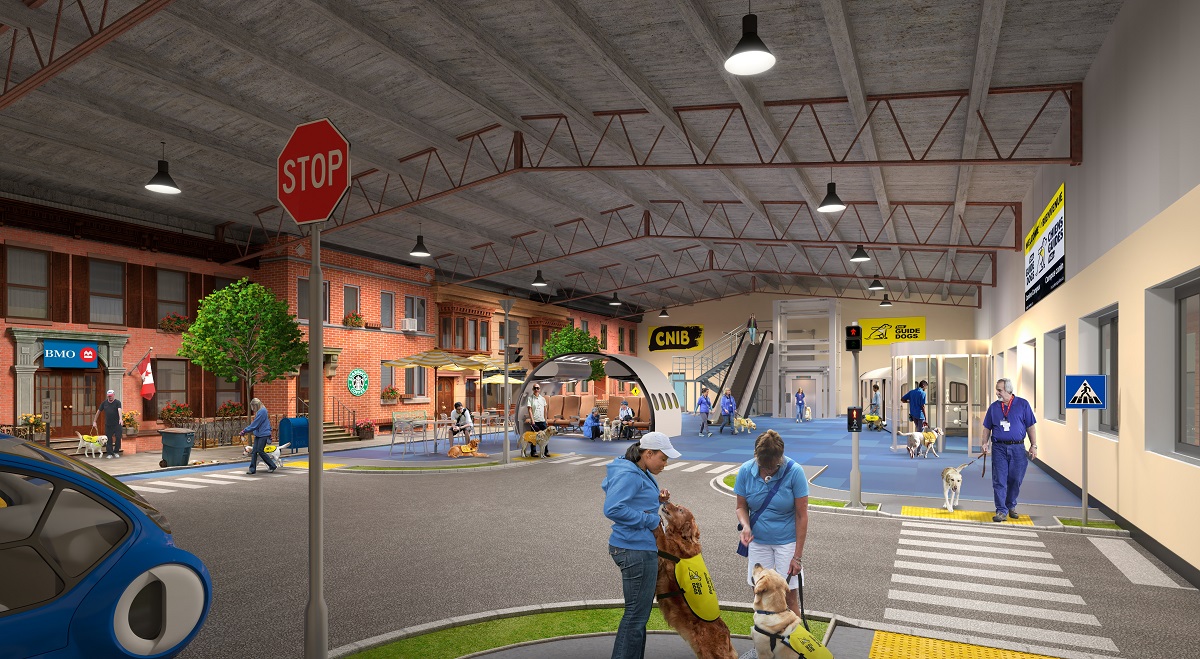
Focus Area 2: Canine Campus
Budget Overview
Construction and Renovation: 71.1%
Program Implementation: 19.3%
Technology & Travel Infrastructure: 9.6%
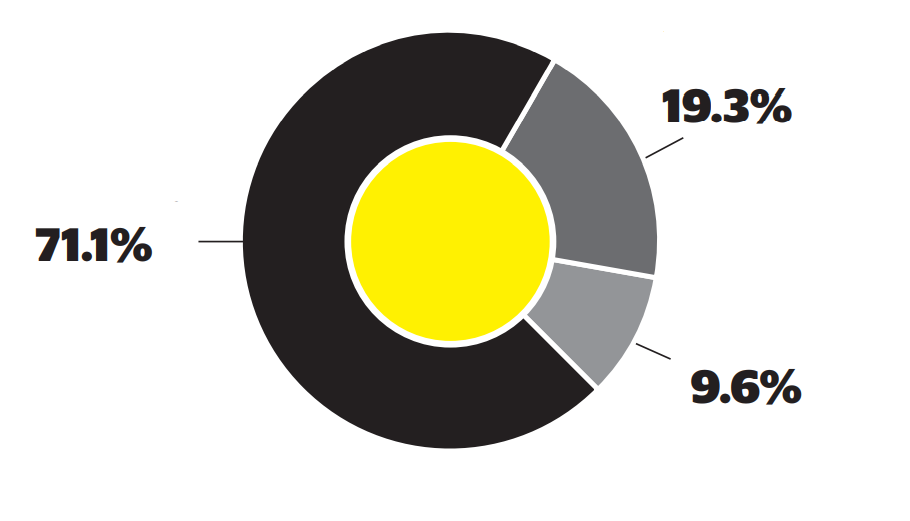
Construction and Renovation
13 dog pods, a run area, indoor city
Technology & Travel Infrastructure
6 guide dog vans, AI technology, VR technology, escalators, sound systems
Program Implementation
Program evaluation, operational costs, marketing and promotional materials
"When my remaining vision started to disappear, my head hurt from straining to use my remaining vision as much as I did. My guide dog changed all that. I can walk with my head held high knowing that he has got me covered."
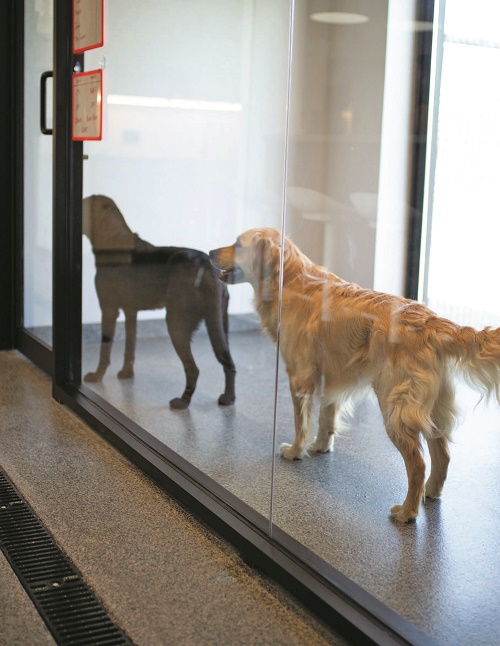
Focus Area 3: Puppy Development Program & Facilities, Fundraising Goal: $7,500,000
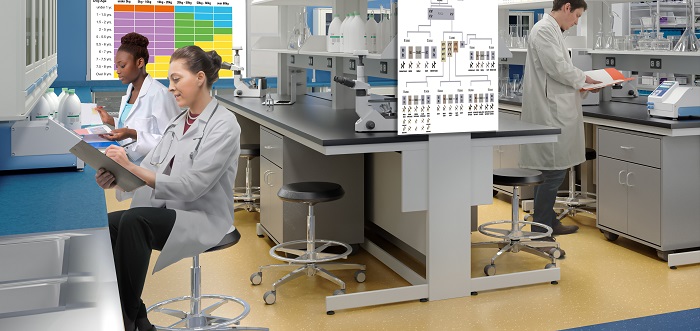
In four short years, CNIB Guide Dogs has grown tremendously and become a leader in the guide dog community, However, our program is still young, and we are far from being able to provide guide dogs to all those who wish to have one.
At present, we acquire our puppies through purchase from international breeders - but doing so puts us in a position of vulnerability. Not only does it leave us unable to closely examine the historical genetics of our puppies (which speak to crucial traits relevant to our needs, such as temperament and physical health), but it makes us reliant on other organizations for the very foundations of our program: our dogs. The border closures caused by COVID19 are an all-too-real example of how this model can negatively impact our program and the Canadians who rely on it.
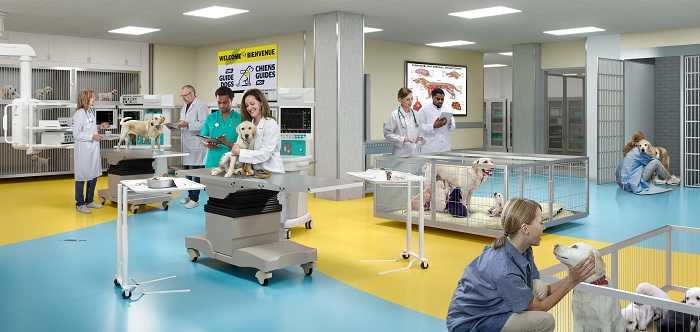
The critical link to a long-term solution to our needs is to develop a first-of-its-kind Canadian guide dog breeding program, along with the accompanying breeding and whelping facilities. This program would involve significant capital and start-up infrastructure, including the purchase of at least two broods (female breeding dogs), and two breeding facilities complete with clinic areas and various necessary features such as an air filtration system, outdoor run space, and indoor whelping accommodations.
After extensive research and consultations with experts in the field of guide dog breeding, our team has developed a thorough understanding of program needs, as well as breeding cycles, and projected investments.
Our goal is to breed 60 dogs per year at an estimated 68 puppies per pregnancy; importantly, the health and wellness of the broods, as well as the stud dogs, will be of foremost importance.
Focus Area 3: Puppy Development Facilities
Physical Facilities
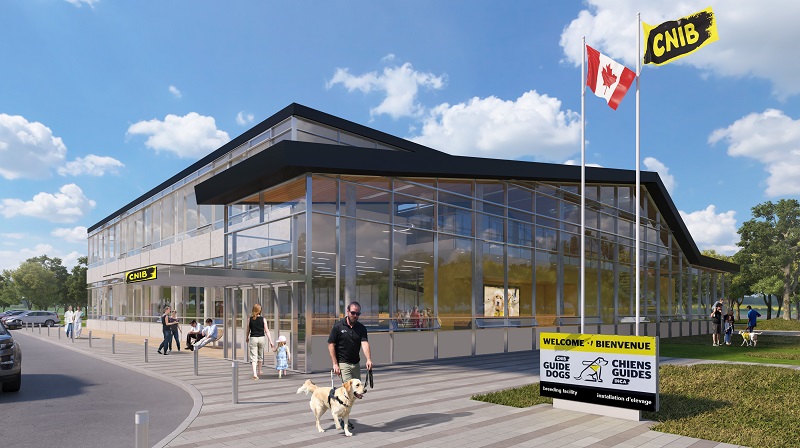
At least two buildings (one on each coast) will be built and renovated to serve as holistic and state-of-the-art breeding and whelping facilities. Those facilities will require the following:
- Close proximity to a partner veterinarian clinic (yet to be established)
- An air handling and filtration system that ensures air is not shared by both the brood and stud during the period of heat, which is imperative to successful breeding
- Rows of pods (kennels), including heated floors, ceramic tiles, an indoor/outdoor run, and built-in water dishes
- Litter pens for puppy weaning and evaluation
- Cryogenic labs for artificial semination, mating, and collection
- A centralized indoor/outdoor run
- A clinic area complete with facilities for veterinarians to make “house calls” in the dogs’ home environment
- A viewing area that allows members of the public and supporters to watch the puppies, which we believe will be an important asset in raising funds in the future and securing important partners
- Storefront gift shop facilities to raise awareness and funds to help secure the ongoing sustainability of the program
Focus Area 3: Puppy Development Facilities
Breeding Program
Program Implementation & Evaluation
We anticipate that the breeding program will require an investment in several new staff positions, including but not limited to a breeding manager, technical staff, kennel staff, and maintenance/custodial staff.
Associated Costs
In addition to the costs outlined above, we anticipate the need to invest in the following items/resources:
- 2 (to start) brood dogs of the highest stock quality
- 2 branded vans for transport of the dogs as needed
- Ongoing marketing and promotional investments
- Ongoing equipment and necessities for the dogs, including food, toys, leashes, harnesses, leads, beds, etc.
- Other items as needed and advised by program experts
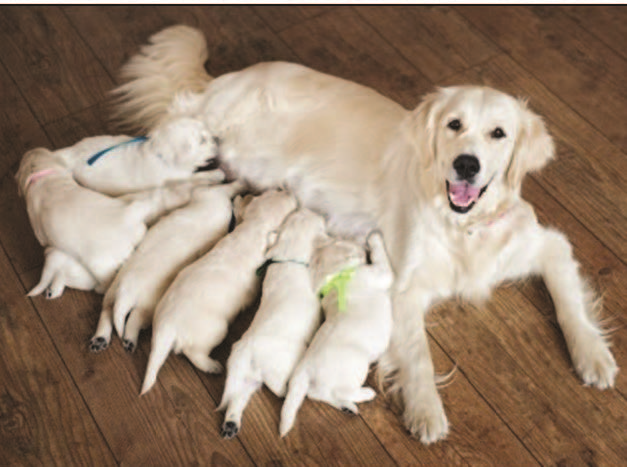
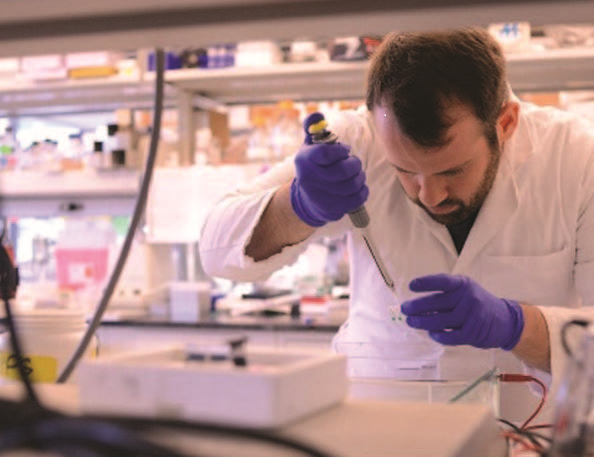
Focus Area 3: Puppy Development Facilities
Budget Overview
Building 1 Capital: 40%
Building 2 Capital: 40%
Breeding Program: 20%
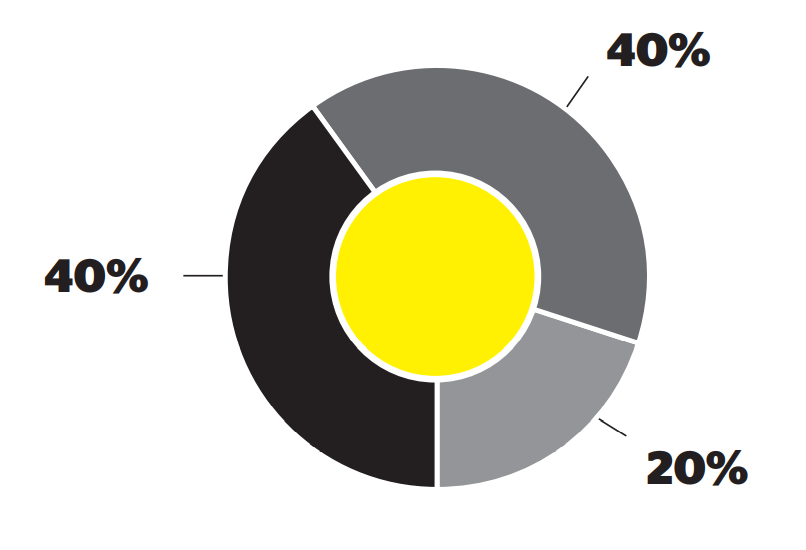
Building 1 Capital
Acquisition, pods, labs, and all facilities
Building 2 Capital
Acquisition, pods, labs, and all facilities
Breeding Program
Equipment, technology, software, brood dogs, vans, program implementation and evaluation, marketing and promotion
“
The freedom, independence, and confidence that my guide dog brings to my life is priceless.
Having a guide dog is a right, not a luxury.
”
